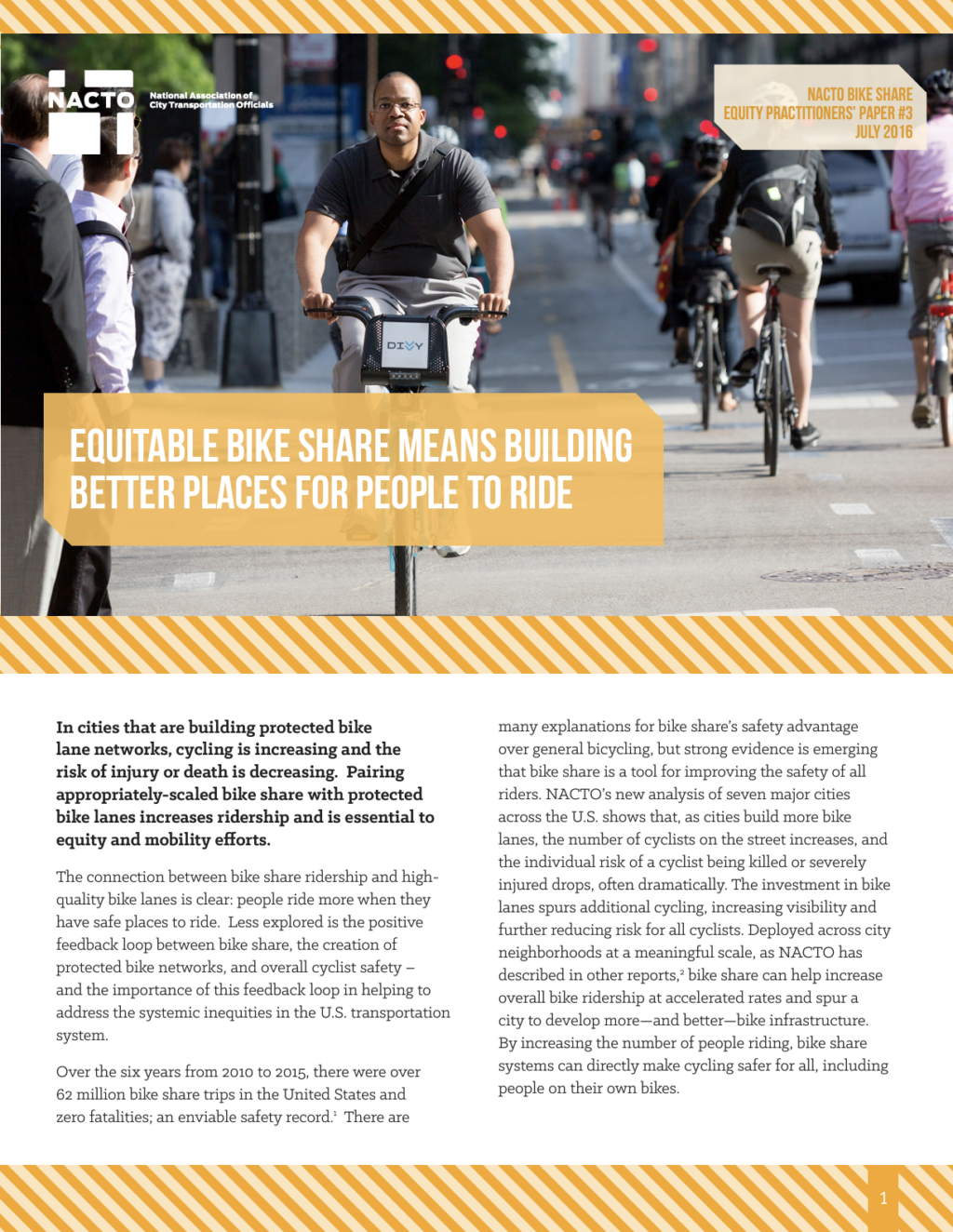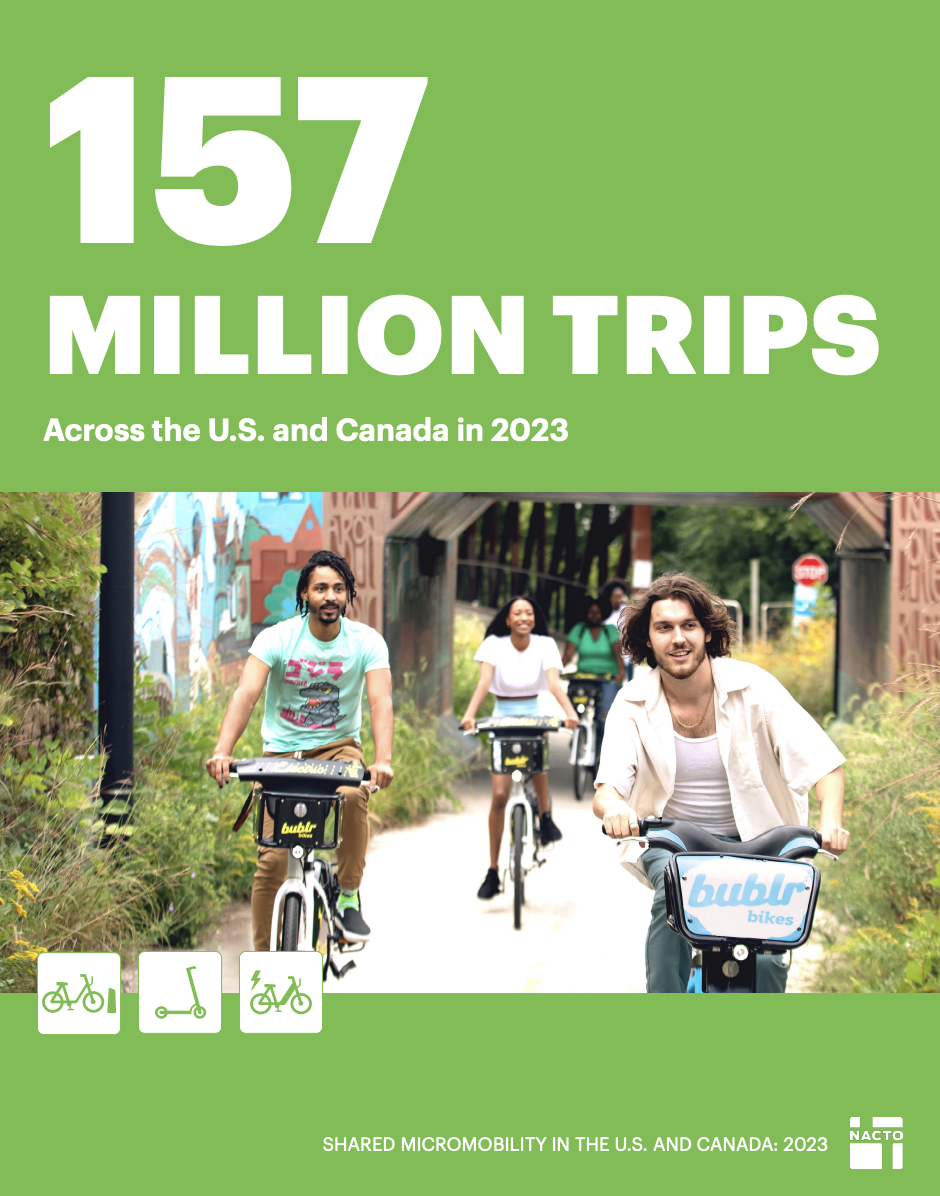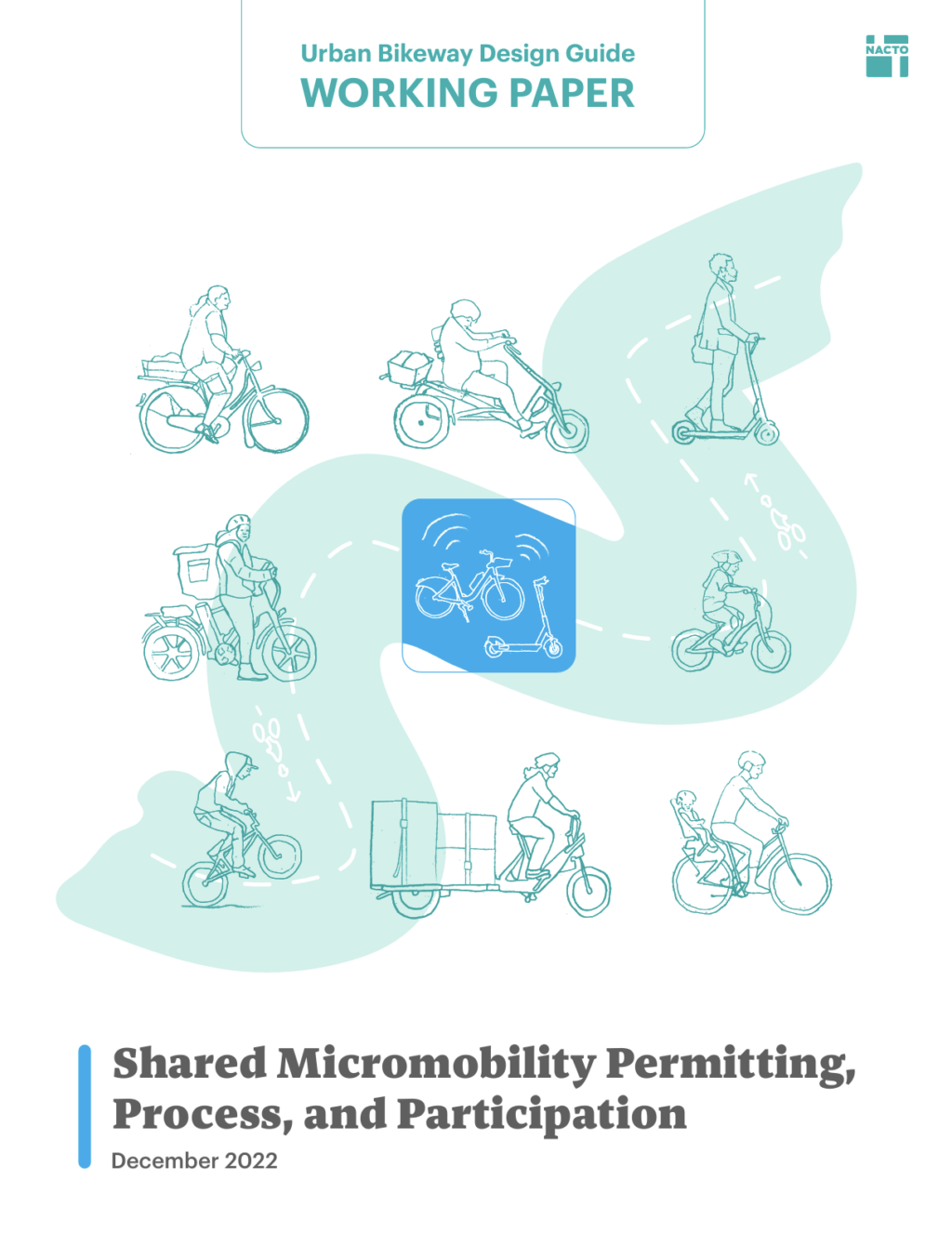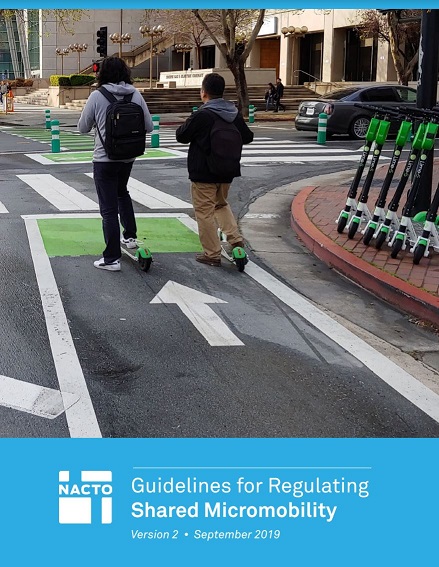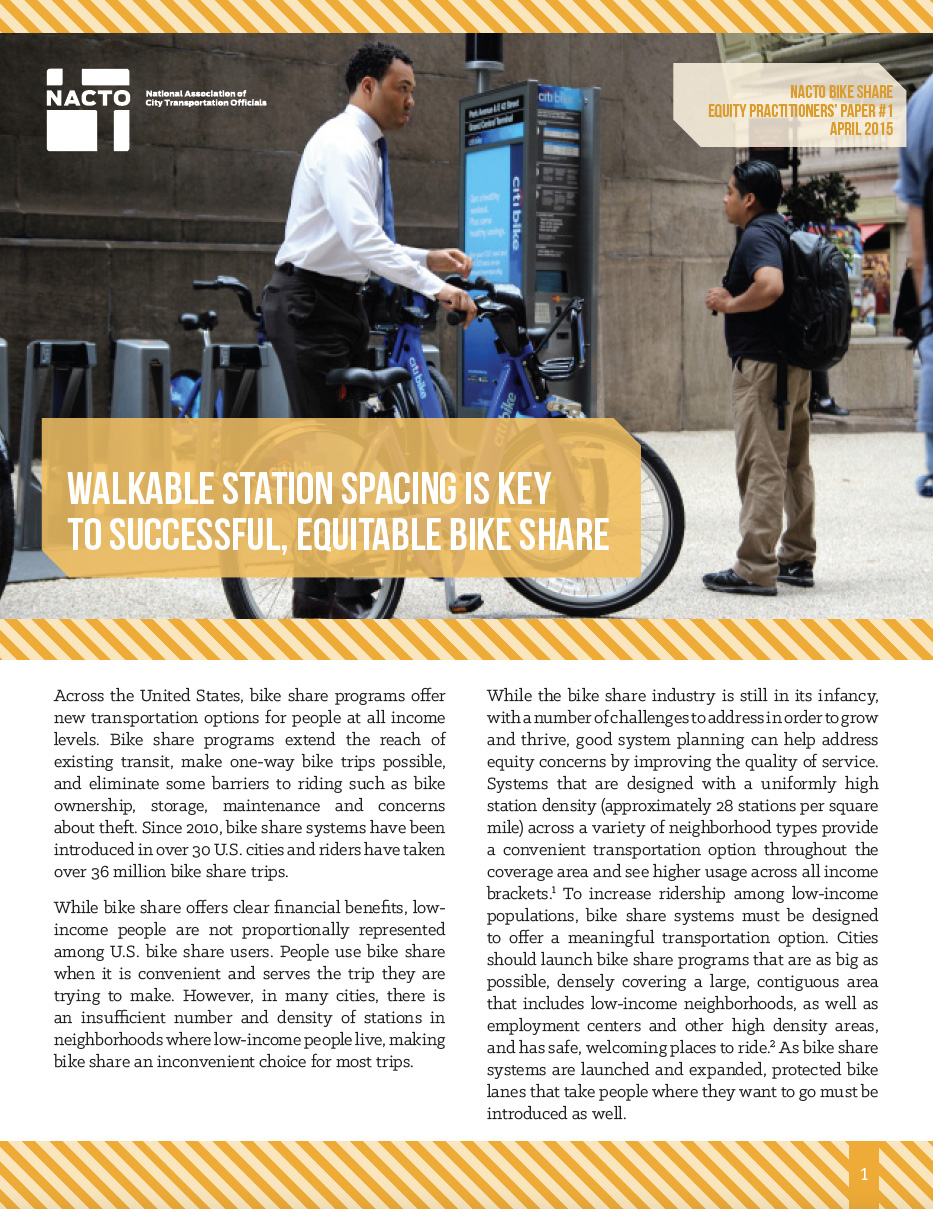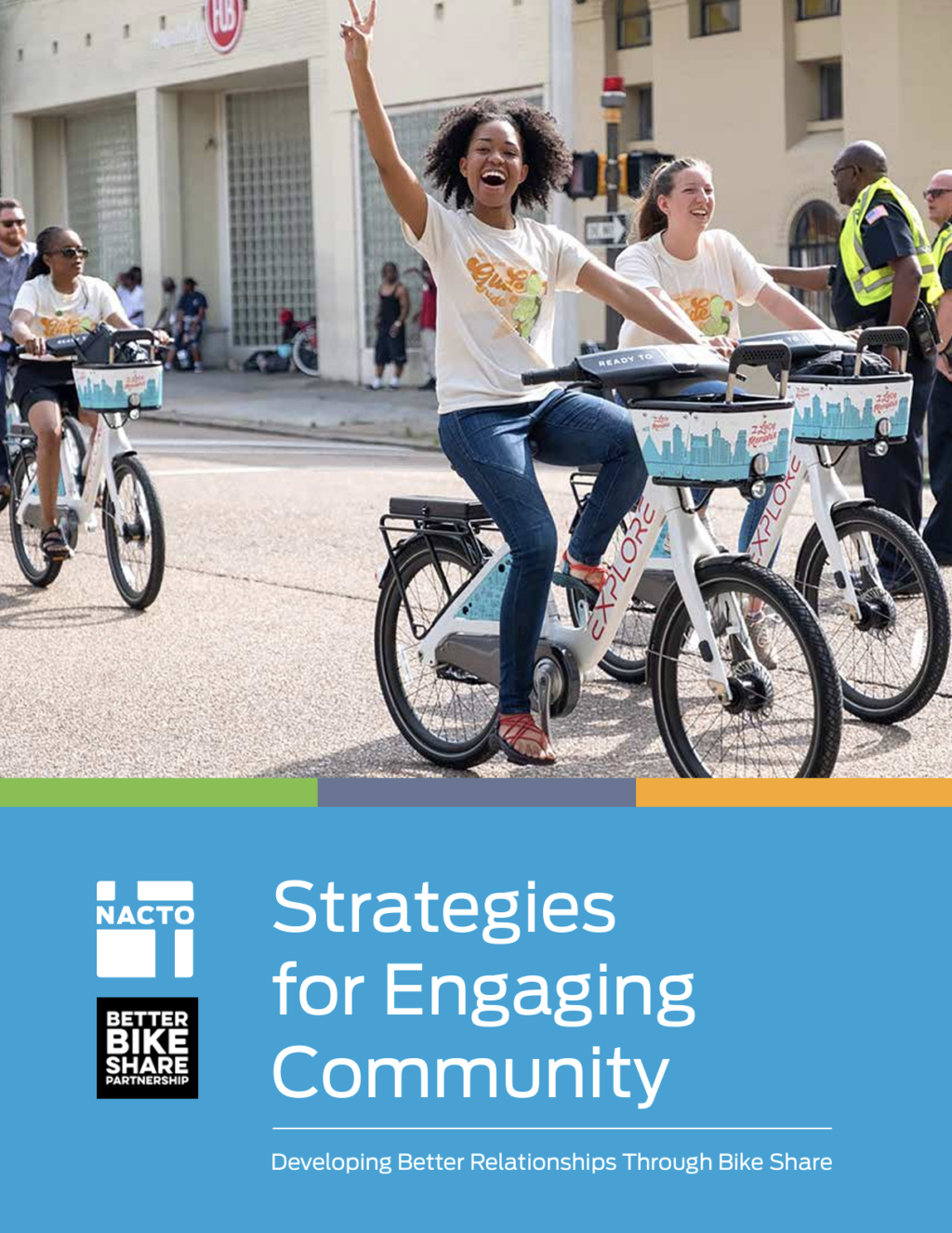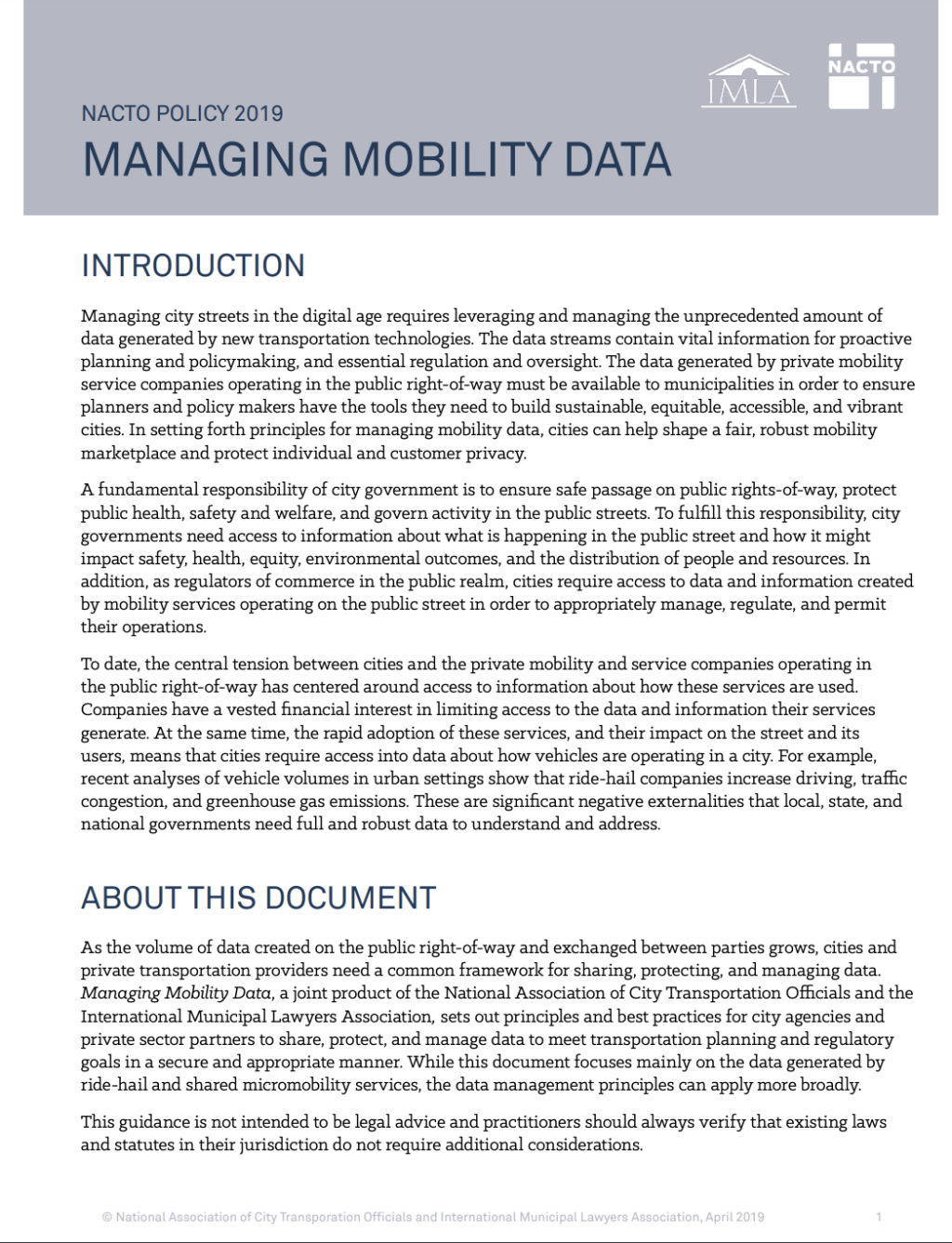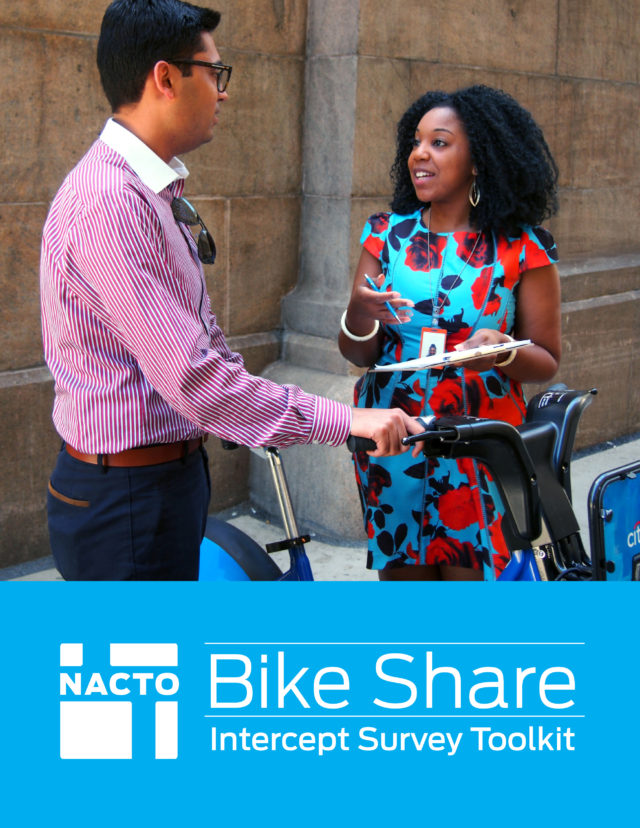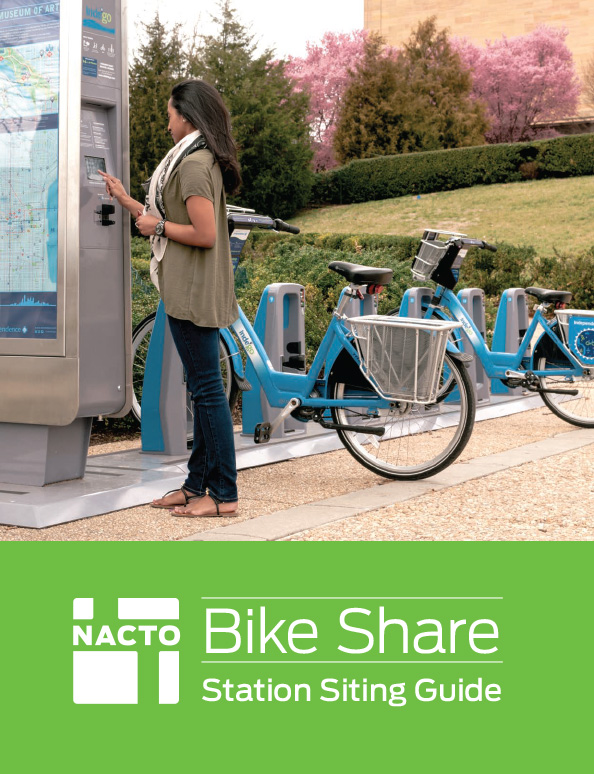NACTO Bike Share | Equity Practitioners’ Paper #3
In 2016, NACTO analyzed bike infrastructure and ridership trends in seven major cities across the U.S.—Chicago, Minneapolis, New York, Philadelphia, Portland, San Francisco, and Washington DC—and found a positive feedback loop between bike ridership, the creation of protected bike networks, and overall cyclist safety.
Based on in-house research and analysis of other reports, the paper showed that as cities build more bike lanes, the number of cyclists on the street increases, and the individual risk of a cyclist being killed or severely injured drops. Applying these findings to the practice of increasing equity in bike share planning, this paper outlines seven lessons for cities as they plan to increase access to and use of bike share in underserved communities:
Support bike share by building out bike networks: Ensuring that people have places to ride where they feel comfortable and safe is essential to larger equity and mobility efforts. The safety benefits of increased ridership are enhanced when growth in cycling is matched with construction of new, better bike lanes.

Design for the “Interested but Concerned:” The majority of the U.S. public is interested in biking but concerned about safety; whether they ride is dependent on the quality of bike lanes available to them. Matching convenient bike share systems with a protected bike lane network is a recipe for success.
Remember who is already riding: Half of the people who bike to work earn less than $25,000/year. As cities build for more cyclists they should ensure that the bike lane network includes safe routes–both spatially and in terms of quality–for these existing riders.
Long term community engagement is essential: People in all neighborhoods want safe places to walk, bike, and play. Building long-term, reciprocal relationships in neighborhoods and with locally trusted community organizations is essential to spreading information, getting feedback, and building local support for projects.
Use bike share stations as tools for safety: Planners should strategically place stations in ways that define and protect bike lanes and pedestrian space, narrow streets to reduce speeding, and create pedestrian refuge islands that shorten crossing distances, increasing overall street safety.
Eliminate mandatory adult helmet laws: Mandatory helmet laws reduce the number people riding and negatively impact overall cycling safety. Such laws are also often prone to abuse and disproportionately enforced in low-income neighborhoods and communities of color.
Counting counts: Measuring the trend of biking and biking risk year over year—is it increasing or decreasing and by how much—is one of the best ways to tell if a city is working effectively to make cycling commonplace, easy, and safe for everyone.
NACTO’s Bike Share and Shared Micromobility Initiative
Equitable Bike Share Means Building Better Places for People to Ride is the third in NACTO’s Equity Practitioners’ Paper series, which highlights best practices for cities aiming to address equity issues while introducing or expanding their bike share systems.
Read the rest of the Equity Practitioners’ Paper series:
Equity Practitioners’ Paper #1 | Walkable Station Spacing is Key to Successful, Equitable Bike Share
Equity Practitioners’ Paper #2 | Can Monthly Passes Improve Bike Share Equity?
